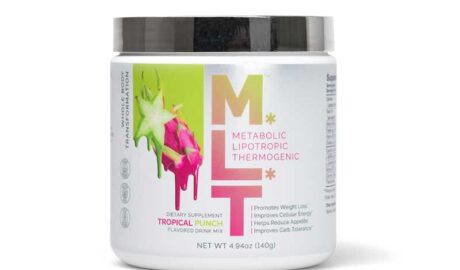In this article
- LLY
Follow your favorite stocksCREATE FREE ACCOUNT
Eli Lilly will spend $4.5 billion to build a center aimed at finding better ways to manufacture its medicines.
The facility, called the Lilly Medicine Foundry, will house development of new manufacturing methods with an eye toward efficiency. It’s a strategy that’s already paying off with Lilly’s obesity and weight loss drugs Mounjaro and Zepbound, and Lilly wants it to propel the rest of its pipeline.
The foundry serves a dual purpose: researching new manufacturing procedures, then putting them into practice with production of drugs for clinical trials. Lilly says the facility will be the first of its kind to combine research and production in a single location.
“The idea is to take molecules from a bench in a lab to scaled for medicines in a pharmacy, and this research and development site will do that work,” Eli Lilly Chief Executive Officer David Ricks said in an interview from the company’s headquarters in Indianapolis.
The center, which is slated to open in late 2027, will be equipped to make small molecules, biologics and genetic medicines. It will be near a $9 billion manufacturing complex Lilly is building in Lebanon, Indiana, to produce pharmaceutical ingredients like tirzepatide, the active ingredient in Mounjaro and Zepbound.
The cranes and steel frames of the active construction site stick out amid the flat farmland, about a 40-minute drive from Lilly’s Indianapolis headquarters.
The investments are part of Lilly’s plan to build upon its success with Mounjaro and Zepbound, which are riding a wave of popularity in so-called GLP-1 drugs with Novo Nordisk’s Ozempic and Wegovy.
Mounjaro and Zepbound are expected to bring in $50 billion alone by 2028 – almost twice the company’s entire full-year revenue in 2022. That gives Lilly more freedom to invest, but it also puts pressure on the company to find and develop more new medicines to keep growing in the years to come.
Lilly is already charting its future beyond tirzepatide. The company also wants to develop more drugs for Alzheimer’s disease and other neurodegenerative conditions like amyotrophic lateral sclerosis, or ALS.
“There are all of these huge opportunities to improve human health that are hiding in plain sight,” said Dr. Dan Skovronsky, Lilly’s chief scientific officer. “In our industry, people usually like to see what’s popular and then follow the leader. So a lot of the other companies are now stopping their different research projects so they can try and figure out how to catch up to us in obesity and Alzheimer’s disease. OK, we’re working on the next thing. Sorry.”
A sign with the company logo sits outside of the headquarters of Eli Lilly in Indianapolis, Indiana, on March 17, 2024.Scott Olson | Getty Images
Lilly wants to look for “breakthrough ideas” in areas where the company already has a foothold such as oncology and immunology, as well as newer areas like cardiovascular disease, chronic pain and hearing loss, Skovronsky said.
Neuroscience is one area where he and Ricks want to put particular focus. Lilly has a long history in the space between its antidepressant Prozac and its newly approved Alzheimer’s drug Kisunla, but they see more work to do.
“Neuropsych is a huge unmet need,” Ricks said. “Addiction and mental health, but also neurodegenerative conditions, so we’re investing heavily there. And perhaps the gains we’ve made in obesity can help fund the research in new areas.”
That’s not to say Lilly is done with obesity.
More CNBC health coverage
- FTC sues drug middlemen for allegedly inflating insulin prices
- Pfizer says drug for deadly cancer condition that causes weight loss shows positive trial data
- Gilead says its twice-yearly shot cut HIV infections by 96% in trial
Ricks acknowledged that one drug won’t meet all needs and that Lilly needs to keep moving the science forward. The company has 11 obesity drugs in its pipeline with different mechanisms of action and modes of delivery, he said. That includes two closely watched drugs in Phase 3 trials: an experimental pill called orforglipron and another injectable medicine called retatrutide.
Lilly is investing everywhere it thinks makes sense in obesity, Ricks said, but he recognizes other companies might explore new mechanisms that it’s possible Lilly hasn’t. He wants to see more pills, especially ones that can go after multiple targets. He’s also interested in technologies that mean giving injections less frequently, such as short interfering RNA.
Any new advances could help Lilly become the first trillion-dollar health-care company. The company’s stock has soared nearly 65% over the past year, giving Lilly a market capitalization of about $840 billion.
Ricks downplays the importance of hitting the trillion-dollar mark, saying it would be an outcome, not a goal, for Lilly.
“We want to do valuable things, and if we’re successful, we create value,” Ricks said. “That’s how we’ll get to a bigger number.”
Don’t miss these insights from CNBC PRO
- How Warren Buffett decides when to sell a stock, and why he might be dumping Bank of America
- This is the cost of carrying too much cash, according to Wells Fargo
- Chinese stocks are on fire, and this sector is poised to benefit
- David Tepper’s big bet after the Fed rate cut was to buy ‘everything’ related to China





